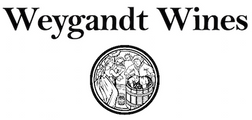
Drinking with the Seasons: Fall Inspirations
For many folks living in the Northern Hemisphere, including those of us in the Washington, DC area, the arrival of autumn brings new clothes out of the closet and different foods to the table.
Often, the type of wine in our glasses changes as well, reflecting the colors, sights, smells, and even the feelings of seasonal change. Perhaps these are wines that capture the last of late summer fruits, matching the appearance, taste, and texture of apples, pears, and fall squashes.
These could also be wines with more weight and texture match the feelings of warmth and coziness we instinctually seek this time of year. Maintaining notes of fresh crispness can be equally important, reflecting autumn's cool mornings and nights readying our palates for heavier foods.
Alex Bardsley, certified sommelier and WSET Diploma holder, shared with us a few of his thoughts for capturing the best of fall through wine.
As Head Sommelier at the venerable L’Auberge Chez François in Great Falls, Virginia, Alex has a near-perfect fall setting from which to draw inspiration: hearty Alsatian cuisine served in the warm embrace of a half-timbered house situated in a bucolic wooded setting.
----------
Recently, as dining out has often meant dining outside, menu and beverage offerings have become more seasonal than ever.
This summer, wine was all about drinkability, what the French call ‘vins de soif,’ or wine for when you’re thirsty. Crisp Alpine whites, pale Provençal pinks, and fresh reds not too high in alcohol or tannin that drink well a bit chilled, like Beaujolais, Barbera, Blaufränkisch, or Bourgueil.
These wines pair well with lighter summer fare, but as temperatures fall and dishes become richer and more robust, so should the wines.
Vivid fruit makes room for more savory and spicy flavors. Aromas that evoke the season are favored (except, maybe, for pumpkin spice!) and instead of the simplicity of summer, subtle complexity better captures the emotions of autumn.
Certain flavors remind you of the season and at this time of year, I think of the more generous and ripe flavors, such as apples or pears. I recently enjoyed a bottle of the Désiré Petit Crémant du Jura Blanc de Blancs that smelled like apples in pastry, as well as the lovely Sicera Odette Poiré de Normandie that reminds me of freshly picked pears.

The wines of Alsace offer a sunny generosity rarely found in similar wines from Germany, Austria, northern Italy, or even Oregon. The balance of fruit, acidity, and sometimes sweetness just makes me smile. The intensity of ripe varietal flavor in an Alsatian Pinot Gris – tree fruit and sweet spice – is unmatched with the last soft shell crabs of summer, roast pork with apples and mustard, curried vegetables, winter squash with butter and nutmeg, or baked root vegetables.
The 2018 Albert Mann Pinot Gris Rosenberg evokes these sentiments beautifully, with moderately intense aromas of pear, ginger, cardamom, and white mushroom. Dry, with a moderate to elevated level of acidity and full-bodied, but still fresh and ripe without being too fleshy. A hint of phenolic bitterness cleans up the finish like a good prosecco.
Fermentation was originally about preserving food and beverages that would not be available during the cold winter months, as much as it was (and still is) about making an intoxicant. It's a way to stave off death and decay, and even make something that could last and develop for decades.
So, with winter coming, we may be drawn to things that evoke this sentiment. Mushrooms suggest life from decomposition, and taste autumnal to me. They also pair very well with mature red wines, especially Pinot Noirs like the 2013 William Charriat Irancy. Interestingly, this Pinot from the northern extreme of Burgundy benefits from an hour or two of decanting to awaken from its slumber and open up its complex layers.
From the Roussillon, Domaine Gauby’s 2012 Côtes du Roussillon Villages ‘Muntada’ is savory rather than fruity, with aromas of smoked meat suggesting maturity, and tannins that soften as the wine relaxes into the complexity of age.
Colors are associated with autumn, too. In place of the bright green, blue, white, and silver of summer, we think of the gold, burnt orange, and brick red of leaves on their way to tawny and brown. Warming and slightly savory fortified wines, such as amontillado and oloroso sherries, fit this mood as well.
A.B.
------

